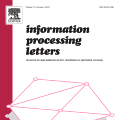In recent years, segmentation methods based on deep convolutional neural networks (CNNs) have made state-of-the-art achievements for many medical analysis tasks. However, most of these approaches improve performance by optimizing the structure or adding new functional modules of the U-Net, which ignoring the complementation and fusion of the coarse-grained and fine-grained semantic information. To solve the above problems, we propose a medical image segmentation framework called progressive learning network (PL-Net), which includes internal progressive learning (IPL) and external progressive learning (EPL). PL-Net has the following advantages: (1) IPL divides feature extraction into two "steps", which can mix different size receptive fields and capture semantic information from coarse to fine granularity without introducing additional parameters; (2) EPL divides the training process into two "stages" to optimize parameters, and realizes the fusion of coarse-grained information in the previous stage and fine-grained information in the latter stage. We evaluate our method in different medical image analysis tasks, and the results show that the segmentation performance of PL-Net is better than the state-of-the-art methods of U-Net and its variants.
翻译:近些年来,基于深相神经神经网络的分解方法(CNNs)为许多医学分析任务取得了最先进的成绩,但是,大多数这些方法都通过优化U-Net的结构或增加新的功能模块来改善绩效,而U-Net的结构或增加新的功能模块忽视粗微和细微的分解信息的补充和融合。为了解决上述问题,我们提出了一个医学图像分解框架,称为累进学习网络(PL-Net),其中包括内部渐进学习(IPL)和外部累进学习(EPL)。 PL-Net具有以下优势:(1) IPL将特征分解分为两个“步骤”,可以将不同大小的可接受字段混合起来,获取从粗微颗粒到细的语义信息,但不增加参数;(2) ELPL将培训进程分为两个“阶段”,以优化参数,并实现前一阶段粗化的分解信息以及后一个阶段的微分解信息融合。 我们在不同医学图像分析任务中评估了我们的方法,结果显示,PLNet的分化和变式方法比变式方法要好。


